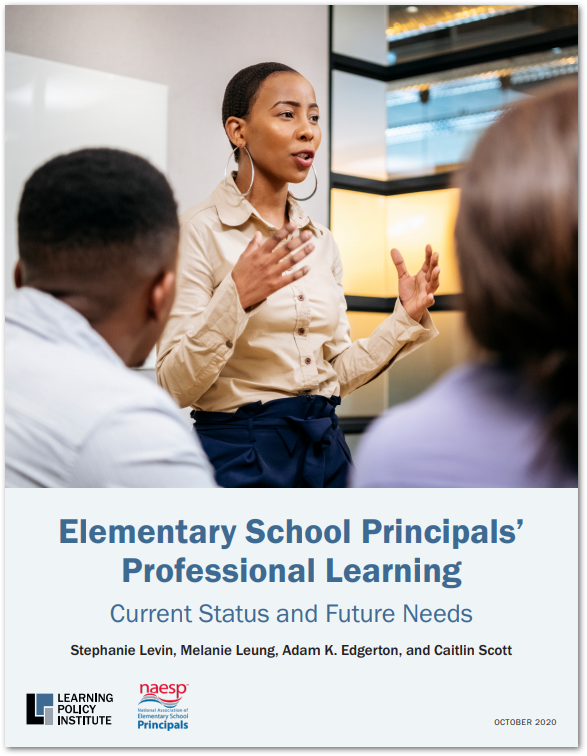 High-functioning school principals are essential for ensuring that students have access to strong educational opportunities. Since the onset of the COVID-19 pandemic, the role of the principal has become even more critical in identifying and meeting students’ needs. Making sure principals are equipped with the knowledge they need to lead is critical.
High-functioning school principals are essential for ensuring that students have access to strong educational opportunities. Since the onset of the COVID-19 pandemic, the role of the principal has become even more critical in identifying and meeting students’ needs. Making sure principals are equipped with the knowledge they need to lead is critical.
To learn more about principals’ opportunities for professional learning, NAESP teamed up with the Learning Policy Institute to conduct a national principal study surveying 1,000 principals. The results are outlined in a new report, “Elementary School Principals' Professional Learning: Current Status and Future Needs.”
According to the results of the survey, over four in five principals (84 percent) indicated that they faced obstacles to pursuing professional development. The top three reasons were not enough time (67 percent), insufficient coverage for leaving the building (43 percent), and not enough money (42 percent). Principals serving schools with high percentages of students of color were more likely to report lacking money for professional development (50 percent), compared with less than a third of principals of schools with low percentages of students of color (32 percent)
While many principals reported having had access to professional development, far fewer principals reported that they had participated in authentic learning opportunities (e.g., applied learning experiences, mentors and coaches, and networking with colleagues) despite the literature stating that these authentic, job-embedded learning opportunities are associated with positive outcomes.
Additionally, principals reported wanting more professional development content across a range of topics. The topics most frequently identified were related to whole child education—a range of practices that involve deeper learning and tending to the social emotional and physical health of students. Principals also reported wanting more professional development content addressing equity and diversity in their schools.
Lastly, although most principals indicated their districts supported their continuous improvement, they also reported facing obstacles to participating in professional learning. These obstacles were related to time constraints, insufficient coverage, and lack of funds.
You can download the full report here.